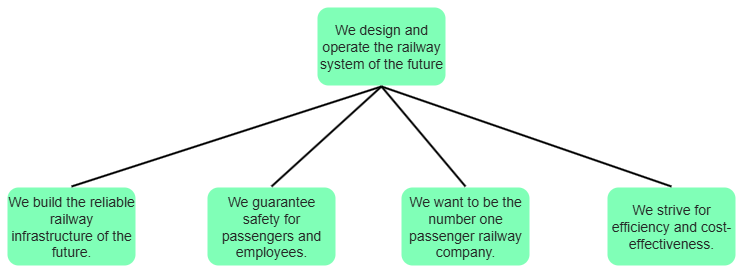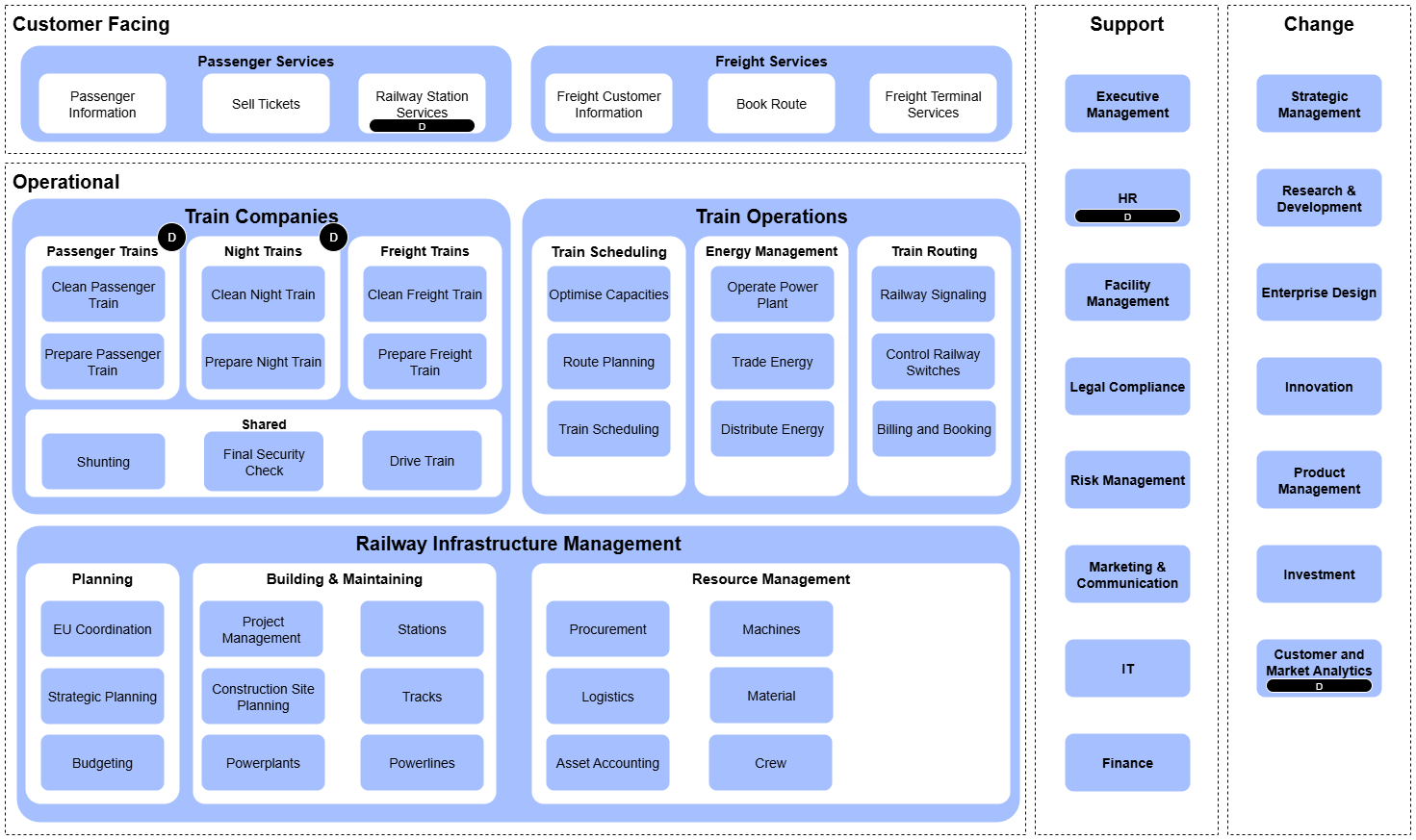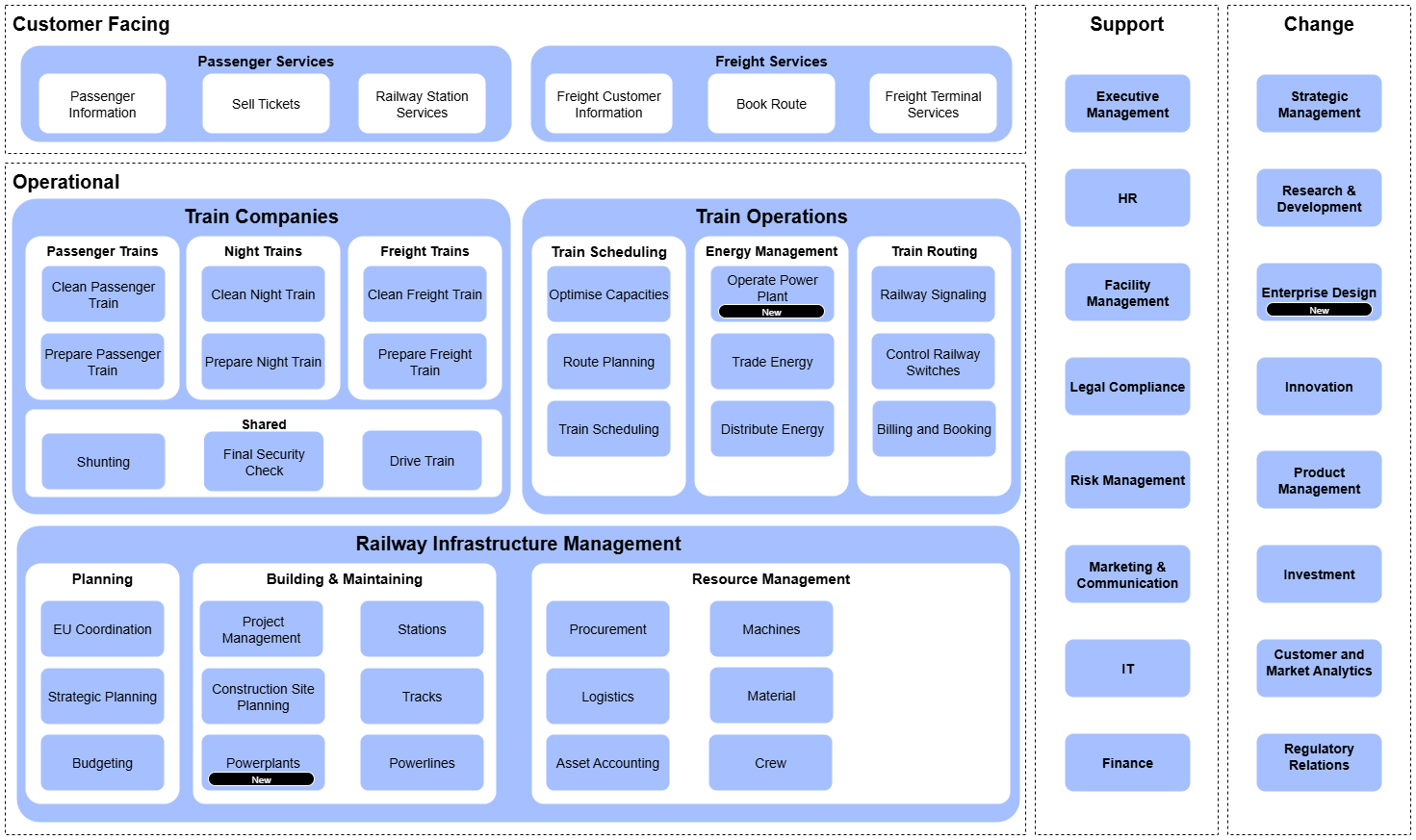Capability Modelling Guidelines | How to use Capabilities to Align Investments with Purpose
Clarify Vision
After many iterations with your co-creators, you’ve come to an enterprise-wide agreement on how well you perform your current capabilities compared to your competitors. Use this transparency about your strengths and weaknesses to work on your future state capability model. Clarifying your vision statement and translating it into well-designed future-state capabilities helps focus your investments. To base informed strategic investment decisions on the vision, enterprises must know where to build new capabilities and clearly understand the contribution and performance of their current capabilities. As long as the benefit of a capability for the unique selling proposition of the enterprise is unclear, organisations experience dysfunction, resource competition, stalled execution, and incoherent project agendas.
Model Vision as a Hierarchy of Purposes
Most enterprises have a more or less elaborate vision statement - a concise declaration that outlines their aspirations. The vision statement serves as a guiding star, motivating co-creators towards a common purpose. In theory, the vision statement is clear enough to set the frame for a desired future state, but lets room for the concrete realisation by the many co-creators. In practice, however, most vision statements lack the clarity needed to guide all change initiatives towards the common purpose, because they are not backed up by an agreed-upon capability model.
The first step in making the vision statement more explicit is to model it as a hierarchy of purposes:
Example: Existing vision statement of Intersection Railways:
“Our vision is to lead the transformation of rail transport by designing and operating the railway system of the future. We are committed to building a reliable and forward-looking infrastructure that ensures the highest standards of safety for both passengers and employees. Driven by innovation, efficiency, and cost-effectiveness, we aim to become the number one passenger railway company, setting new benchmarks for excellence in mobility.”
Modelled as EDGY purposes:
Mark Distinctive Capabilities
While the typical vision of Intersection Railways mentioned above may be inspiring for people in and around Intersection Railways, it doesn’t provide focus, all capabilities seem to be of equal importance. Where to invest the always-limited resources? The answer requires work on a unique selling proposition and to dive deeper by working in many iterations with leaders and business experts on distinctiveness.
“Competitive advantage” refers to the distinct benefit that an enterprise's products offer, which clearly differentiates them from competitors in a way that is meaningful to customers. It answers the question: "Why should a customer choose us over others?". Clarity about an enterprise's competitive advantage helps the business carve out a distinctive position in the market, avoiding "me too" strategies and price-based competition. Clarify the competitive advantage as part of the vision and connected to the enterprise's purpose.
By marking those capabilities (of any category) as “distinctive” that contribute to the competitive advantage, you clarify vision and focus your investments. Understanding how capabilities contribute helps organisations set capability performance targets and gives a truer and focused sense of what is needed to realise the future state.
Example: Intersection Railways
Competitive advantage statement as part of the vision: ”We deliver the most convenient experience for our passengers by day and night in the physical space—combining cleanliness, and unmatched experiences in the stations and onboard the trains.” represented by a Capability Map and “distinctive” labels:
To become best-in-class in the physical experience of passengers, Intersection Railways defines all capabilities under “Passenger Trains” and “Night Trains” as distinctive, along with “Railway Station Services.” Additionally, the company must excel in understanding passenger demands through “Customer and Market Analytics” and has designated “HR” as a distinctive capability, recognising the need to attract and retain the right talent to support these areas.
Adding New Capabilities
Put your purpose hierarchy and your benchmarked as-is capability model next to each other. Iterate with relevant business experts and leaders on the question: “Which new capabilities should we build to support our purposes better?"
Example: Intersection Railways
New capabilities “Building & Maintaining Powerplants” and “Operate Power Plant” derived from the purpose “efficiency and cost-effectiveness”
Energy prices have risen sharply in recent years, making train operations too expensive to remain competitive against other forms of transportation. Business experts had long discussed investing in building, maintaining, and operating power plants. The CEO hired an external consultancy to develop a business case and risk assessment for this expansion. Ultimately, the board made the strategic decision to build the capability to construct, maintain, and operate Intersection Railways’ own power plants.
New capability “Enterprise Design” derived from purpose “We build the reliable railway infrastructure of the future”
Intersection Railways founded two departments—“Research & Development” and “Innovation”—a few years ago. Benchmarking showed that their outputs underperformed: many suggestions were made, but only a few were realised, often with questionable business cases. To enable holistic innovation, Intersection Railways established an “Enterprise Design” capability.


